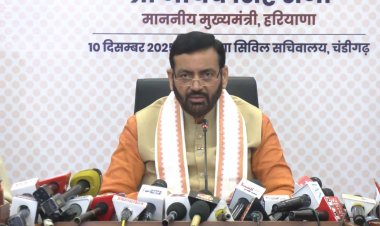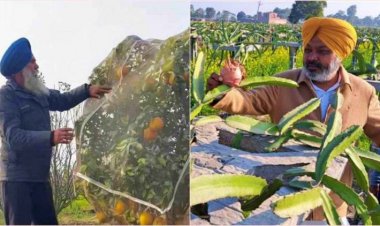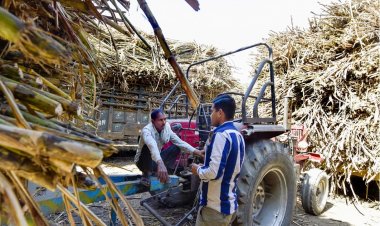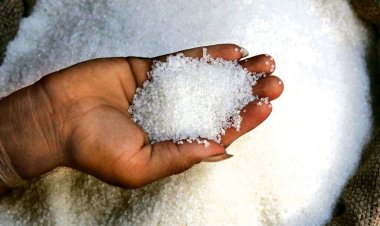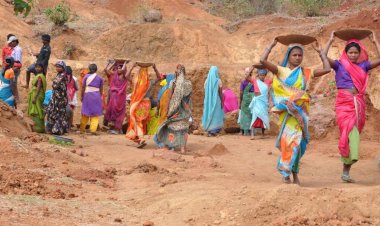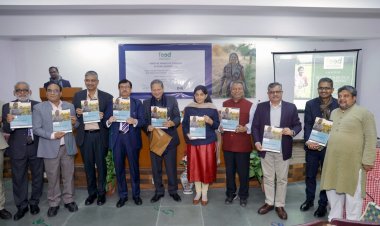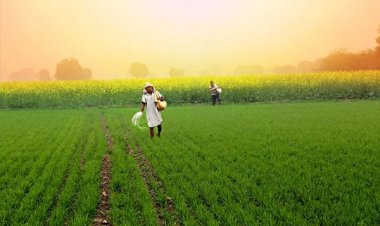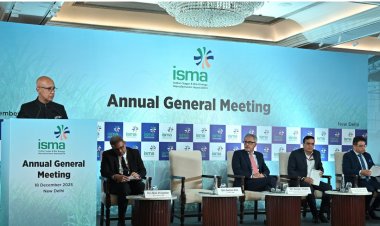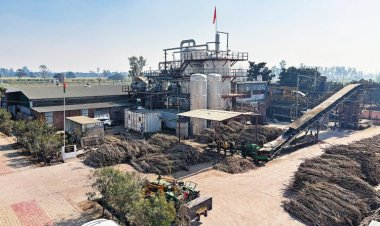Cluster approach is the right road map for development of UP
Chief Minister Yogi Adityanath and his government have got another chance to strengthen the economy of the state and improve the standard of living of its people. In its second tenure, the government should act with a new strategy and policy initiative. UP has all the potential and efficiencies of becoming a strong economy provided they are utilized through a better road map. Results have been obtained in several states of the country, especially in Tamil Nadu, through an economic-cluster approach.

The Uttar Pradesh (UP) government has floated a tender for engaging a consultant to “boost the size of the economy of Uttar Pradesh to one trillion dollars in five years”. Which suggests that the state government is pretty serious about the rapid development of the economy of the state. The Assembly elections in UP have returned the Bharatiya Janata Party (BJP) to power once again. And it has happened after decades in the state that a party has been voted back to power.
It is true, however, that despite being in power for five years, the last government in the state could not take UP much higher on economic and human development indicators. But Chief Minister Yogi Adityanath and his government have got another chance to strengthen the economy of the state and improve the standard of living of its people. In its second tenure, the government should act with a new strategy and policy initiative. UP has all the potential and efficiencies of becoming a strong economy provided they are utilized through a better road map. Results have been obtained in several states of the country, especially in Tamil Nadu, through an economic-cluster approach.
Under the new road map, UP needs to be seen in the form of clusters of economic activities. The biggest industry in the state is the cane and sugar industry. Sugarcane is produced in the western and northern regions of the state, starting from Saharanpur and right up to Deoria. The geographical and climatic conditions present here are conducive to cane production. Besides, this region has the water necessary for the sugarcane crop. A network of sugar mills has spread in this entire region over the last two decades. Currently, besides being the largest producer of sugar, UP has become the state with the largest ethanol production capacity in the country. Also, a substantial quantity of potash is obtained from distillery waste and the Union government has now approved the fertilizer made from it to be eligible for subsidy under the Nutrient-Based Subsidy (NBS) scheme. Besides, several units have started producing compressed CNG from the pressmud separated during the process of manufacturing sugar. And sugar mills are selling the electricity produced from the surplus bagasse to the state government. The possibilities in cane products and industries based on it are rapidly expanding. If these possibilities are properly utilized, the economic condition of 45 lakh-odd farmers may be immensely improved. The government, therefore, needs to freshly start with a new policy for this industry. This industry is based in rural areas only and due to this, work needs to be done on its better utilization for the economic metamorphosis of rural areas.
Potato is produced on a large scale in Hathras, Agra, Kannauj, Etah, Farrukhabad, Shikohabad and Bahraich in the central region of UP and the state is the largest producer of potatoes in the country. Potato farmers and traders have set up cold stores, too, on a large scale here. The largest number of cold stores is present in this part of the country. Plants may be set up here to produce starch and vodka from potatoes to protect the farmers from fluctuations in potato prices. Besides, the large number of cold stores present here may also be used for storing other agricultural products.
Saharanpur has woodwork skills and its products are world-famous. Sherpur, an unknown small town in Bijnore, is the largest centre for paintbrush production. Meerut has the sports goods industry. Muradabad is a centre for handicraft products. Rampur, Muradabad, Budaun and Bareilly are centres for mentha production. 70 per cent of the mint in the world is produced in India and the majority of this is produced in these districts; its export possibilities are constantly increasing. Kannauj is known for perfume production. If Lucknow has chikankari, Banaras is the traditional centre for saris while Bhadohi–Mirzapur has the carpet industry. Firozabad has glassware and bangles units. Kanpur and Unnao have tanneries. If bags, belts and shoes are produced there, the shoe industry of Agra is one that uses leather. There are possibilities galore for developing these centres as big clusters.
Besides, there are 40 slaughterhouses, i.e., meat plants, in the state with a capacity of exporting meat worth $5-6bn. These are automated and registered with the Agricultural and Processed Food Products Export Development Authority (APEDA). Besides exports, these plants supply raw material (fresh salted hide) for the domestic leather industry. They also supply gelatin that is used in making capsules. Policy decisions need to be made viewing this as a big business opportunity.
Infrastructural facilities, which are necessary for industrial development, have strengthened in most parts of the state with the construction of expressways. These facilities will further improve with the construction of freight corridors.
The UP government and its policymakers need to take a look at the example of Tamil Nadu as to how a state can make the most out of its various economic clusters. Sivakasi in Tamil Nadu is one of the lowest-rainfall regions in the country. About 50km away from Madurai, this city is a global hub for firecrackers, matchboxes and printing and it has an economy of more than Rs 10,000 crore. As a result, it has industries and employment on a large scale.
Then there is the city of Tiruppur, about 40km from Coimbatore. It is the largest centre in the country for exports of knitted garments. All big brands of the world outsource garments from here. Every home is associated with this business in some way, and there are garment manufacturing units on a large scale here that fulfil all the parameters of a good industry and provide their employees — you can find female employees in large numbers here — with good working conditions along with decent wages. Businessmen who once started work here with the help of knitting machines from Ludhiana, now adopt the most sophisticated technologies from across the world. There are several groups here who do everything from producing yarn to manufacturing garments on their own, something that not only increases their profit but also makes them competitive in the global market.
Coimbatore in Tamil Nadu is an engineering and textile hub and its products are marketed across the country. Erode is a major centre for turmeric processing while Salem is a centre for power loom and Karur one for building bus coaches. Namakkal is the egg capital of India and also home to transporters with the largest lorry fleet in the country. While leather belts are produced in Ranipet and Ambur, surgical cotton products are made in Chhatrapati that meet the needs of the entire country. Natham produces white shirts that are very cheap.
These examples of Tamil Nadu have been cited here because the state has utilized its various economic clusters to strengthen itself. Similarly, the government of UP, which is also dotted with a number of economic clusters, should strengthen them, take the necessary steps to improve the business conditions and make policy decisions. For this, a road map needs to be designed for the economic development of the state with these clusters at its core.
Over the last few years, the One District, One Product (ODOP) scheme was much in news. It has been considered to be very ambitious. But in real terms, it is not a good strategy. Instead of considering every district as a unit, one should try to take advantage of the possibilities existing in the clusters already present. Besides, what is significant is that these clusters are not concentrated in any particular part but are rather present across the state. So, it is possible to strengthen economic activities throughout the state through these clusters.
There are also some administrative hurdles in the road to the economic progress of UP. All decisions in the state are made at only two places — Lucknow and Allahabad. Interestingly, the decisions made at these two places leave an impact on the entire state. It is necessary to decentralize the bureaucracy at Lucknow and judiciary at Allahabad so that other parts of the state may also become decision centres. If the state is run from other places, too, instead of only from Lucknow and Allahabad, the economic potential of the state may be utilized better. The agenda for decentralization of power should also be included in the road map of the new government.



 Join the RuralVoice whatsapp group
Join the RuralVoice whatsapp group

















